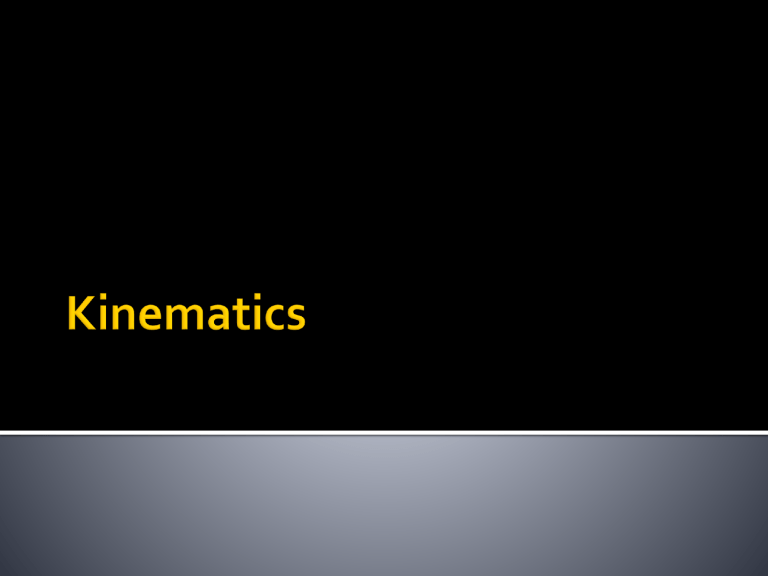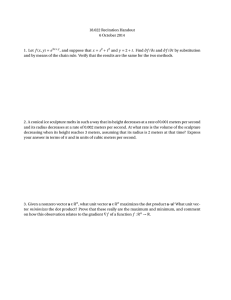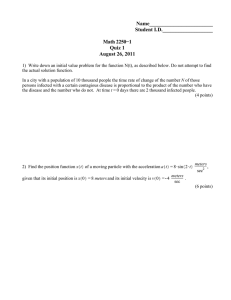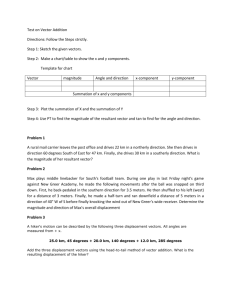
The science of describing the motion of objects using words, diagrams, numbers, graphs, and equations SCALAR A numerical value with no direction Quantities that are fully described by a magnitude (or numerical value) alone E.g. temperature, mass, and energy VECTOR A numerical value in a specific direction Quantities that are fully described by both a magnitude and a direction Quantity Category 5m Scalar 30 m/s, East Vector 5 mi., North Vector 20 degrees Celsius Scalar 256 bytes Scalar 4000 calories Scalar A scalar quantity Refers to “how much ground an object has covered” during its motion A vector quantity Refers to “how far out of place an object is”; it is the object’s overall change in position A person walks 4 meters East, 2 meters South, 4 meters West, and finally 2 meters North. 4 meters Total distance = 12 meters Total displacement = 0 Displacement, being a vector quantity, must give attention to direction. The 4 meters East cancels the 4 meters West; and the 2 meters South cancels the 2 meters North 2 meters 2 meters 4 meters What is the displacement of a cross-country team if they begin at the school, run 10 miles and finish back at the school? Answer: Displacement = 0; round-trip motions always have a displacement of 0 What is the distance and displacement of race car drivers in the Indy 500? Distance = 500 miles Displacement = 0; they finish where they started A scalar quantity Refers to “how fast an object is moving” Rate at which an object covers distance Measured in meters per second (m/s) or kilometers per hour (km/h) A vector quantity Refers to “the rate at which an object changes its position” A vector quantity Defined as the rate at which an object changes its velocity An object is accelerating if it is changing its velocity




